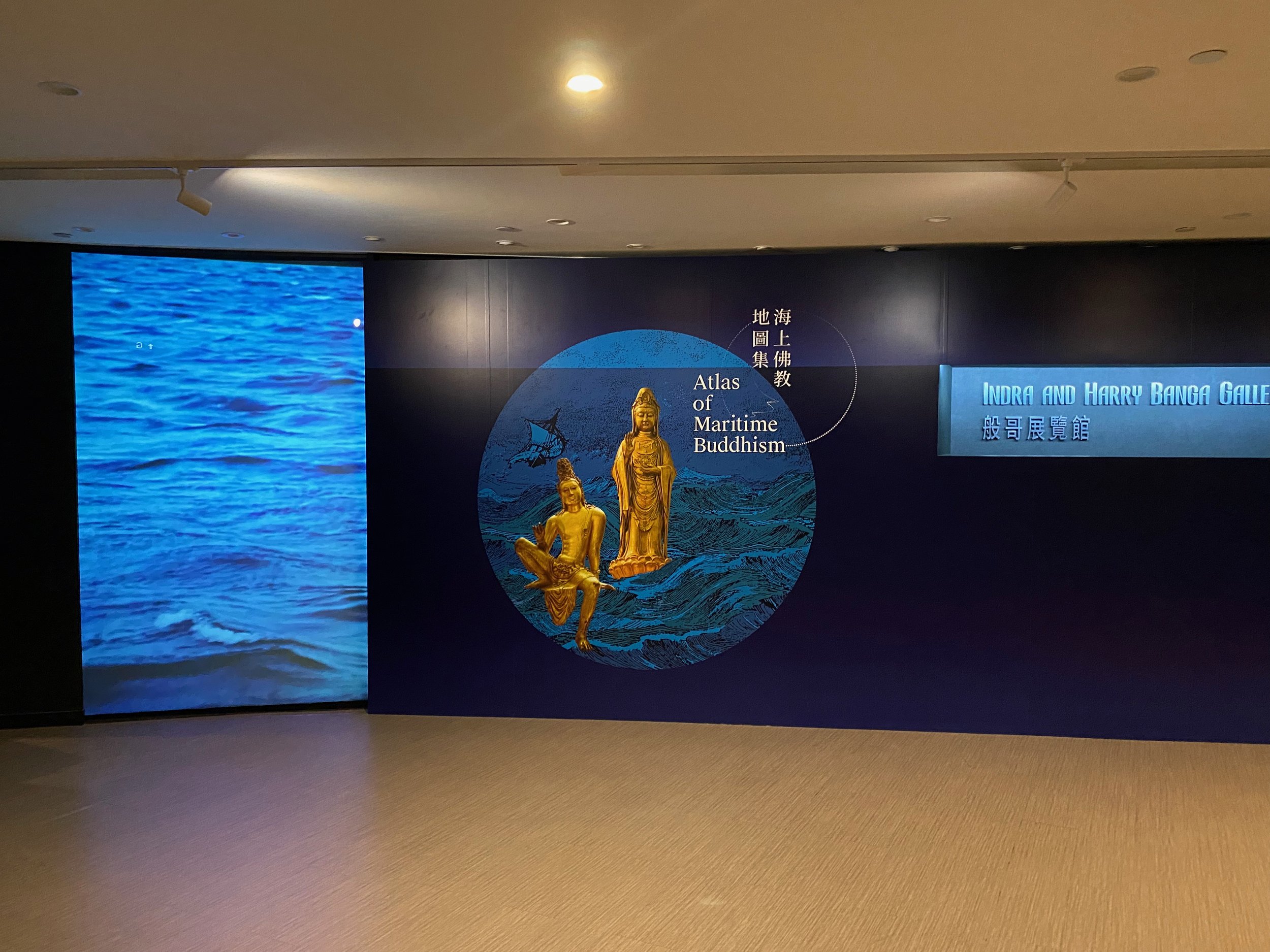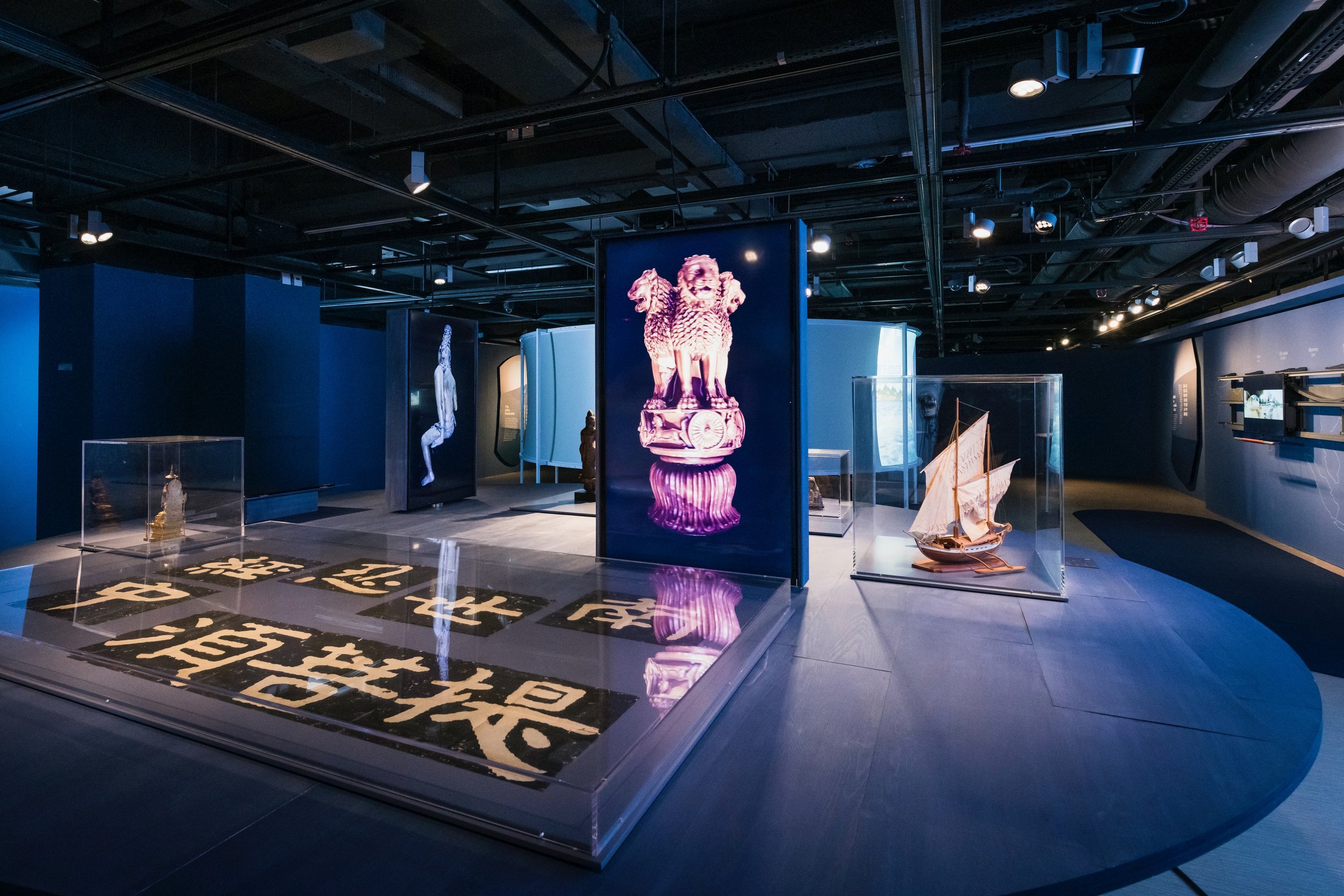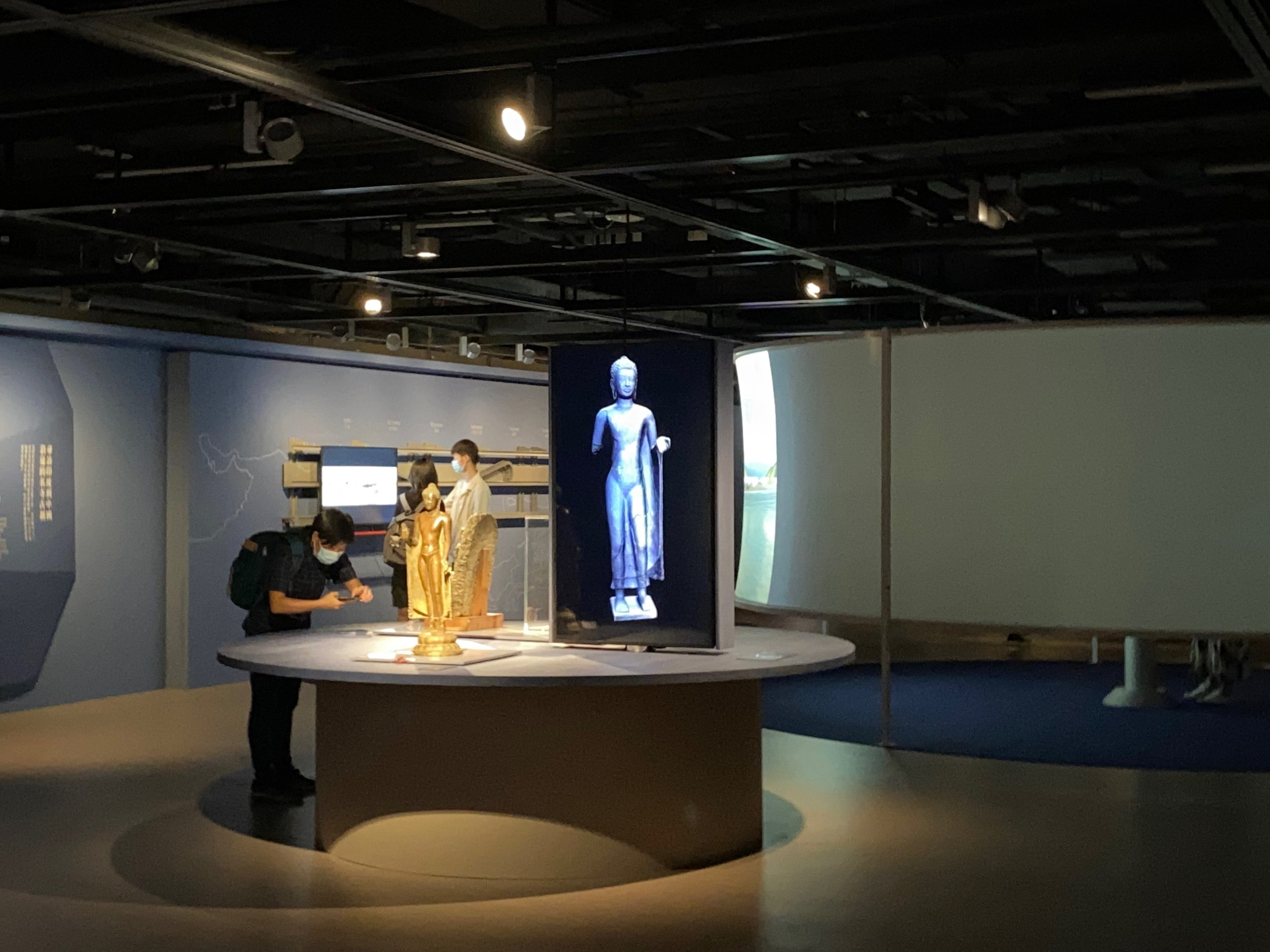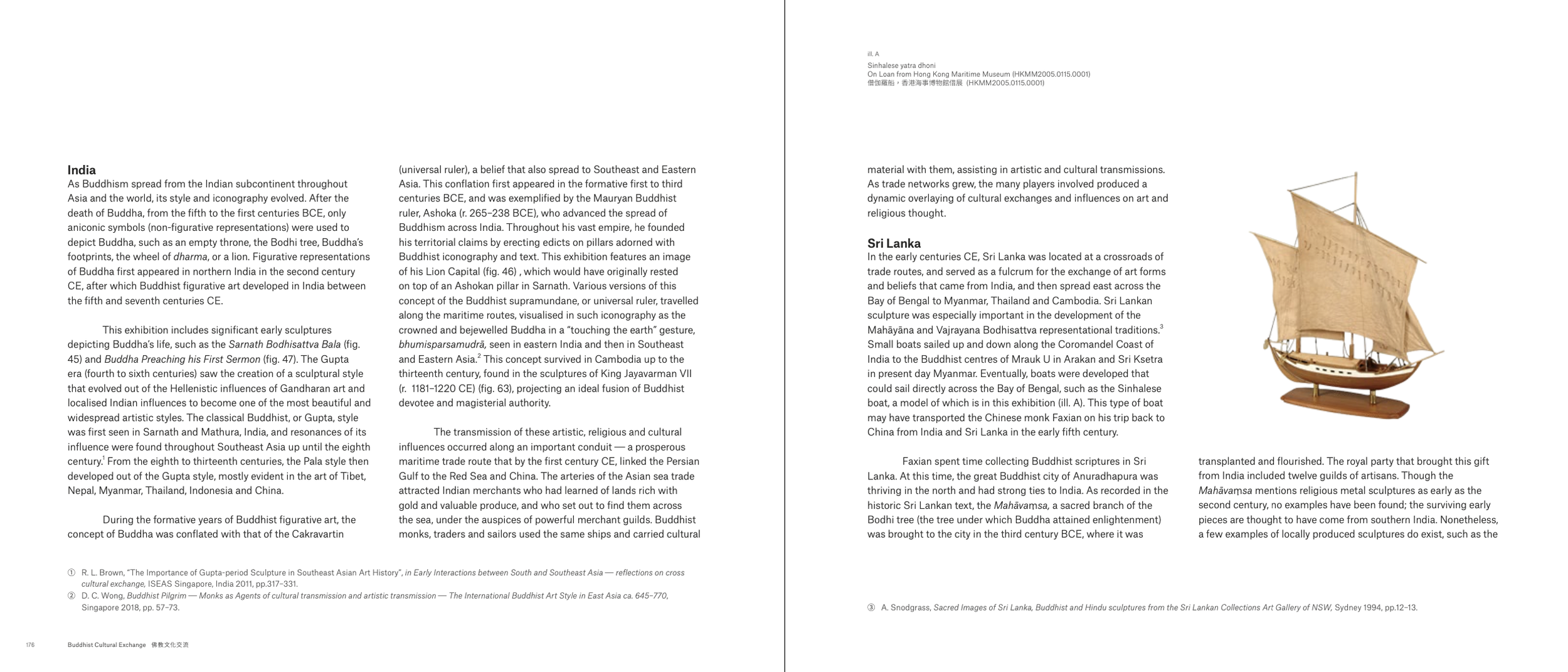Atlas of Maritime Buddhism & Buddhist Sculpture Exhibition (City University Hong Kong 2021)
Curated by art historians and digital cultural-heritage pioneers Dr. Marnie Feneley, Prof. Sarah Kenderdine and Prof. Jeffrey Shaw and with Museum Director Dr. Isabelle Frank the Atlas of Maritime Buddhism exhibition (Hong Kong City University2021), develops ground-breaking Australian research using frontier technologies. The project drives innovation in museum interpretation for future digital experiences. The exhibition integrates a unique heritage dataset which has accumulated historic evidence for the spread of Buddhism fromIndia to China and Japan through the seaports of Southeast Asia to East Asia. Included in the display isa selection of Chinese sculpture curated by Dr. Marnie Feneley, juxtaposing digital photogrammetric models of sculptures from major museums of Asia with important sculptures from the collections of Hong Kong. The research material gathered over years for this exhibition is a testament to the way Buddhism has flourished for many centuries.Covering thousands of important Buddhist sites, the Atlas of Maritime Buddhism maps these treasured monuments and sublime architectures of South, Southeast, and EasternAsia. The spread of Buddhist practices, art, philosophy and architecture via maritime routes from the Ganges Basin in India to East and Inner Asia, in the early centuries CE is a crucial part of world history. Entrepôts and riverine sites played a major role in the expansion ofBuddhism beyond the shores of India. The narrative of this exhibition is the way Buddhism travelled these maritime routes that flowed from India to Southeast Asia and East Asia, an early international multicultural trade network.
Exhibition: Buddhist Cultural Exchange/Buddhist Art Works (7th July–14th October 2021) Harry Banga Gallery, City University of Hong Kong (City U)
Curated by Marnie Feneley, the exhibition Buddhist Cultural Exchange highlights some key sculptures, artefacts and texts from University and private collections located in Hong Kong.These sculptural objects combined with photogrammetric models tell the story of the transmission of Buddhism from India to China along the Maritime Route. Many of the objects in this exhibition have not previously been on display. The exhibition is complimented by a scholarly essay by Marnie Feneley on Buddhist cultural transmission in the catalogue of the Atlas of Maritime Buddhism.
-
Since the late centuries BCE, Maritime Asia has been the theatre for the circulation of people, goods, languages and ideas along its sea routes; it can be conceived as one interconnected network with a common history. This region is made up of a web of ever-changing relationships between coastal and inland polities, linked by port cities spanning the Bay of Bengal, the Indian Ocean, the South China Sea and the East China Sea.
The importance of sea routes in shaping pre-modern, intra-Asian connectivity, via trade, diplomatic contact, and religious and cultural exchange, is becoming more widely recognised. Rather than being a case of “cultural drift” and occasional inter-cultural contact, the current view is that this was a robust and effective trading network, supported by coastal and inland polities resulting in the cultural transmission of religious beliefs and artistic styles. The economic/mercantile maritime routes provided conduits for the formation and spread of Buddhism. Buddhism, including its philosophy, art and architecture, originated in the Ganges Basin and spread throughout Eurasia, Southeast Asia and Eastern Asia. As a result of selective regional adaptation of intellectual, cultural and aesthetic exchanges, Buddhist art flourished and changed across the maritime route.
This exhibition is an interdisciplinary investigation of the cross-cultural paths that informed the creation of localised Buddhist religious and cultural practises across the region, creating a florescence of artistic diversity in Buddhist art. The exhibition includes important examples of early Buddhist sculpture, and traces its development over the centuries from India and Sri Lanka to China and Japan along the maritime routes of Southeast and Eastern Asia.


































































